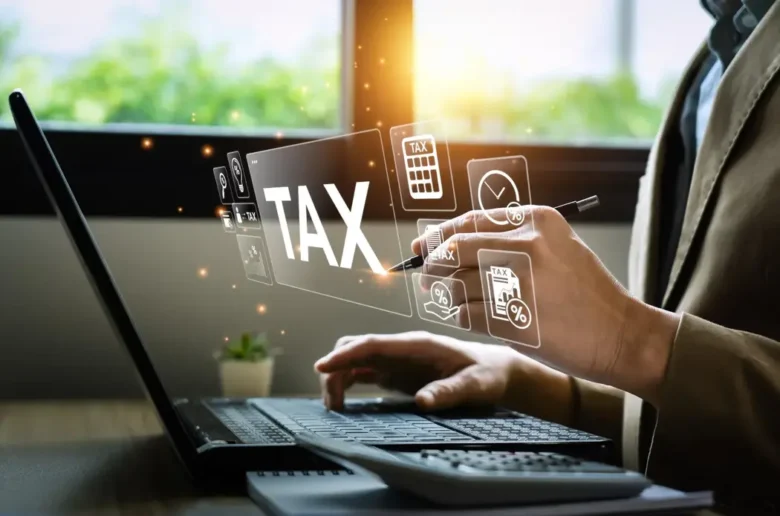For those looking to build wealth with a small amount, micro-investing has revolutionized the market. Investors can now use apps and platforms to buy fractional shares, allowing them to invest pennies or dollars at a time. While almost anyone can use this investment strategy, it’s important to remember that even small investments can have tax implications. While many novice investors mistakenly believe micro-investing is insignificant, the Internal Revenue Service (IRS) treats micro-investing the same as standard investments for tax purposes. Whether the gain comes from capital gains, dividends, or interest, the IRS will still charge you a portion. To help you comply with regulations, avoid surprises, and maximize your investment returns, this article discusses the key tax implications of micro-investing.
Learn the Basics of Taxes and Micro-Investing:
Micro-investing refers to making small investments regularly, often through apps that allow users to buy fractional shares, ETFs, or other assets. The tax rules for micro-investing are the same as for larger investments. Regardless of how small your transactions are, if you make a profit, the IRS will still tax them. Capital gains tax and income tax on dividends or interest are the two main types of taxes you’ll face. When you sell an investment at a profit, you’ll have to pay capital gains tax. The rate depends on how long you’ve held the asset. If you’ve held the asset for less than a year, you’ll pay short-term capital gains tax at your regular income tax rate; if you’ve held it for more than a year, you may be eligible for a lower long-term capital gains tax rate. Dividends and interest are generally taxed in the year they’re received, regardless of whether you reinvest them.
Capital Gains Tax for Micro-Investing:
Even if you only earn a few dollars a month, any profit from the sale of an asset is considered a capital gain. If you sell a stock, regardless of the amount, micro-investing platforms will typically provide you with a 1099 form when you file your taxes. Your holding period determines how much tax you owe. Short-term capital gains are taxed at the same rate as regular income and can be higher than long-term rates. Depending on your income, long-term capital gains are typically taxed at 0%, 15%, or 20%. Frequent buying and selling can boost short-term gains and result in a higher tax rate, something many micro-investors don’t realize. Therefore, a buy-and-hold approach is generally more tax-efficient, even for micro-investors. Tax-loss harvesting is also worth considering; if some investments lose value, you can sell them to offset gains and lower taxes.
Micro Investment Income, such as Dividends and Interest:
You can use various small investment apps to invest in interest-bearing accounts or dividend-paying stocks. Even if the amount is small—sometimes just a few cents—this income is still considered taxable income. The Internal Revenue Service (IRS) distinguishes between ordinary (non-qualified) dividends and qualified dividends. Non-qualified dividends are taxed at your normal income tax rate, while qualified dividends are taxed at a reduced long-term capital gains rate. You must report these amounts on your tax return, and your broker will report them on Form 1099-DIV. Similarly, interest on bonds or interest-bearing accounts in your small investments is also taxed as regular income. For small investments, some investors choose tax-advantaged accounts such as IRAs or Roth IRAs, which protect these gains until they are withdrawn (or, in the case of Roth IRAs, are fully exempt).
Monitoring Taxes on Micro Investments:
One of the most difficult tasks for small investors is keeping track of every small transaction. Daily or weekly investing can result in dozens or even hundreds of small transactions over a year, each with its unique tax implications. While most investment platforms offer consolidated tax forms, it’s crucial to maintain your tax records. This information includes purchase dates, investment amounts, sales dates, and sales prices. By keeping accurate records, you can take advantage of tax deductions or loss carryforwards and ensure you pay the correct amount of tax. For complete security, it’s advisable to use tax software or seek expert advice if you have multiple accounts or platforms. Due diligence is crucial, as even small, unreported amounts can result in IRS penalties.
Conclusion:
While micro-investing is a fantastic way to build wealth without investing a large sum, it does come with tax obligations. The IRS regulates fractional shares and micro-investing, just like it does traditional investments. Whether you receive dividends, interest, or capital gains, you must disclose your income and pay the associated taxes. Understanding how dividends are taxed, how short-term and long-term gains work, and how to maintain accurate records can help you avoid headaches and unnecessary costs. A proactive approach to tax matters can ensure your microinvesting journey is profitable and compliant. While small investments may not seem like much, they can grow into significant assets over time, and their tax consequences will also increase.
FAQs:
1. If I spend only a few dollars on a microinvestment, do I still have to pay taxes?
Yes, regardless of your investment income, you must report and pay taxes to the Internal Revenue Service (IRS).
2. How are fractional shares taxed?
Standard tax laws apply to capital gains, dividends, and interest on fractional shares, just as they do to whole shares.
3. Does my microinvesting software send me tax forms?
Yes, most platforms offer a 1099 form, which summarizes your revenue and profit for the year.
4. Can I invest in a microbusiness without paying taxes?
By investing in a tax-advantaged account, such as an IRA or Roth IRA, you can legally defer or reduce your tax burden.
5. What happens if I fail to report a small amount of investment income?
It’s advisable to report all your income on your tax return, as failing to report even small amounts can result in penalties.




